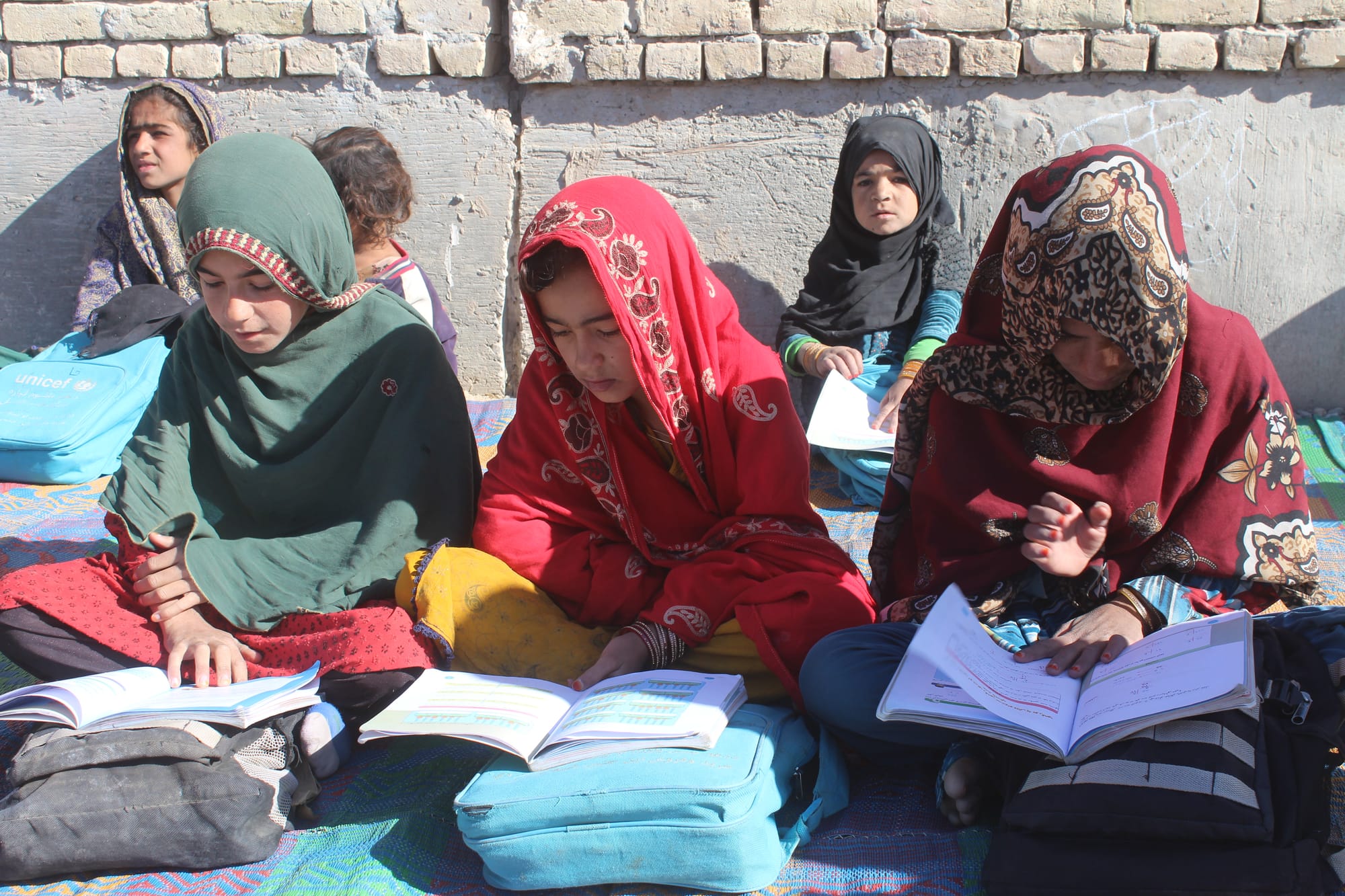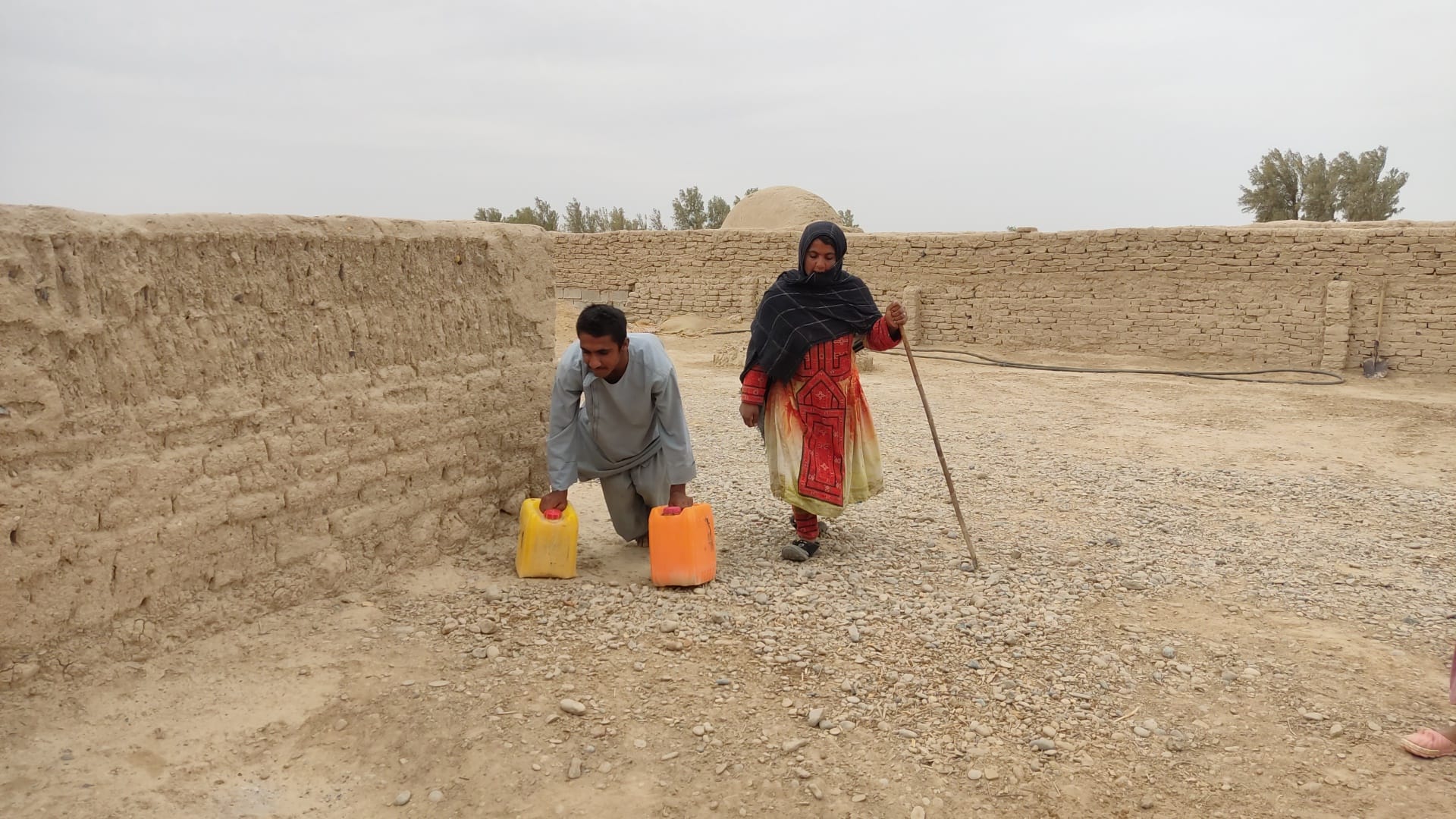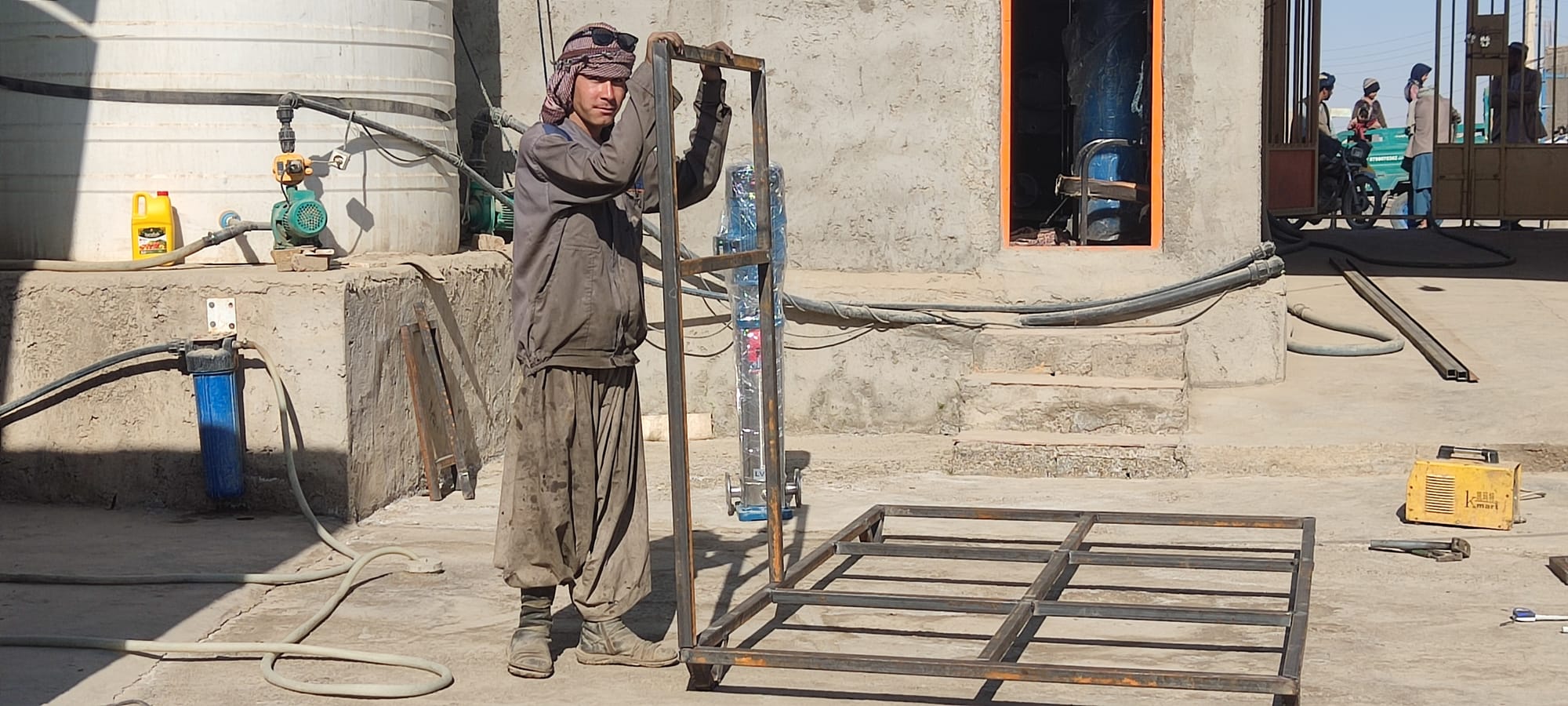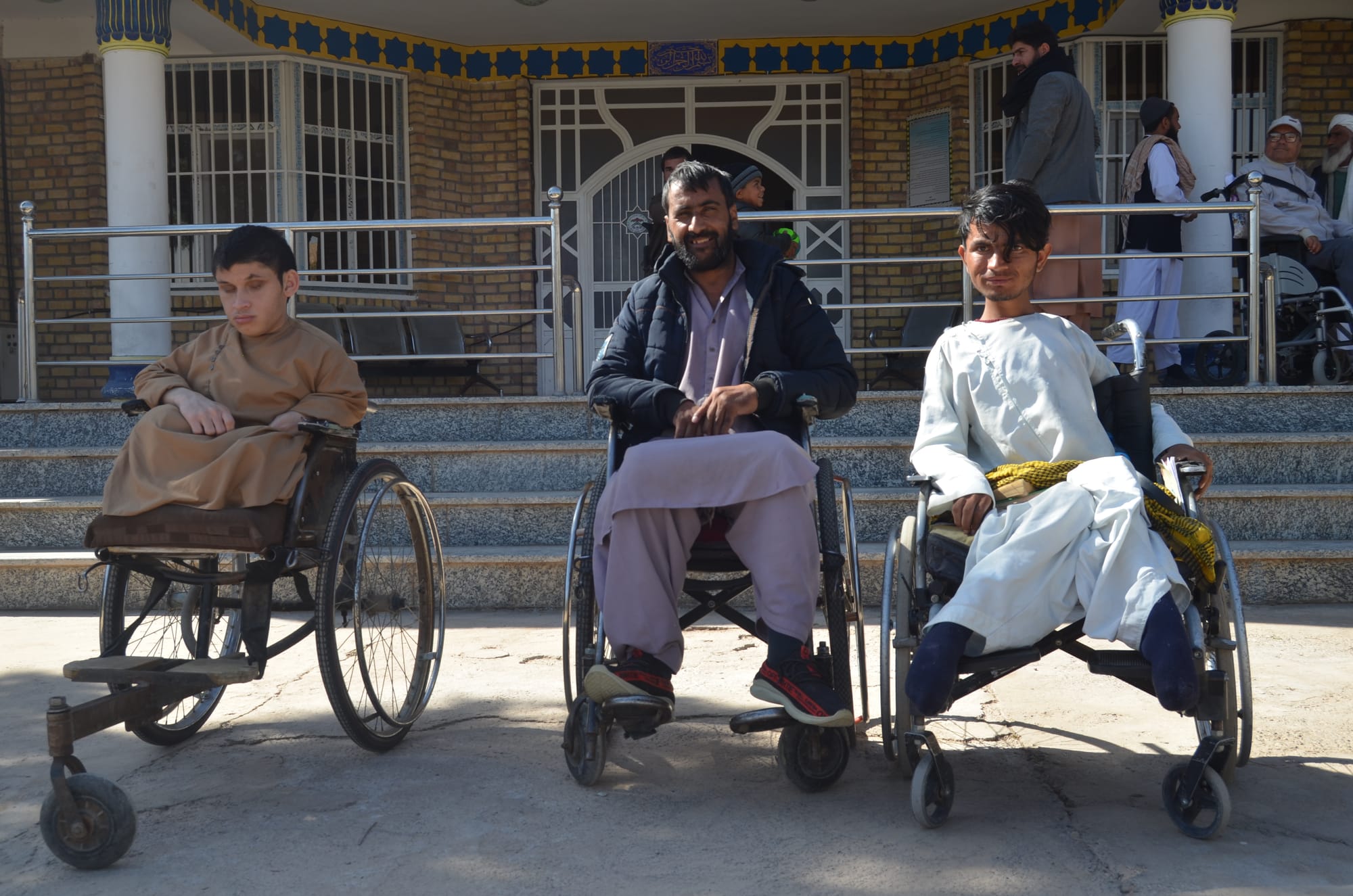Access to Education: How We Did It

This article is part of a broader series exploring changes regarding access to education in Afghanistan, created with support from Afghan Witness (a project of the Centre for Information Resilience), which uses open-source investigating to expose human rights violations and counter mis- and disinformation. This series will incorporate open-source techniques to further corroborate the investigative reporting.
Alive in Afghanistan launched on August 15th, 2021, the same day the Taliban seized Kabul. Since then we’ve published more than 310 features reporting from all 34 provinces, our efforts providing a platform to ensure that the voices of Afghans from all across the country continue to be heard by the world.
Our work has focused primarily on human-centered stories, in an effort to humanize the people whose stories we tell, but our experience reporting on the Abbey Gate bombing with Propublica reinforced the notion that a combination of investigative journalism and human-centered reporting has the capacity to create powerful, groundbreaking stories.
So when Afghan Witness expressed interest in working with us, we jumped at the chance, and the topic came to us immediately: Access to Education.
Alive in Afghanistan (AiA) will work in collaboration with Afghan Witness to document how Access to Education has changed since the Taliban takeover, and dispel myths that the Taliban is the sole or primary reason access to education doesn't meet international standards.
The limitations on access to education since the Taliban returned to power have disproportionately affected Afghanistan’s urban population. These populations are also the easiest for media to access–since historically both Afghan and international media have tended to reside in the major cities. This limitation has both increased the visibility of access to education in urban areas while limiting the reporting on access to education in rural communities. At the same time, our reporting has found that access to education has been increasing in rural areas.
As we began developing the topics we had a few specific goals in mind. Number one, we knew that the issue of access to education is far broader than the “Taliban bad, education good” narrative that appeared to drive much of the coverage of this issue. We wanted to look at the breadth of the problem, extending back even before the fall of the initial Taliban regime, as well as asking whether there was anything positive happening with access to education in Afghanistan.
Initially this led us to quite a number of potential topics, including the impacts of poverty, lack of nearby schools, corruption, ghost schools, religious and cultural traditions, safety, and migration/displacement, as well as a desire to include one report about a topic that has been very underrepresented, the Taliban’s role in opening new schools in areas that never had any sort of access to education.
Eventually, we settled on five topics: new schools, lack of/distance to schools, education access for the disabled, poverty, and religious + cultural barriers.

HOW HUMAN-CENTERED REPORTING STRENGTHENS INVESTIGATIVE JOURNALISM?
Human-centered reporting insists that every story begins with at least one individual human who is affected by the topic of the report. Investigative journalism, in contrast, can be done with little or no engagement with human sources. For example, reviewing publicly available information or using alternative approaches to gathering data such as satellite imagery or using tools such as Facebook’s Crowd Tangle to examine behaviors on social media. AiA’s commitment has always been to tell human-centered stories, so incorporating open-source investigative techniques into these reports was a new opportunity and an interesting exploration of how to complement our existing practice.
For our team, shifting to a more investigative approach meant two primary shifts: expanding the reach of our articles to include individuals from many different regions affected by the issue; and adding more focus on gathering supporting data and other background information, largely from non-human sources, such as papers, studies, reports, and statistics published in multiple languages including universities, international aid organizations, journalists, United Nations, and governments.
HOW DID WE FIND SOURCES
Identifying human sources has always been challenging in Afghanistan, after decades of conflict, deep cultural divides, and low education, Afghans have many reasons to be distrustful of outsiders in general and journalists in particular. With the collapse of the democratic regime, however, the fracturing of Afghan society and a devastated economy, convincing people to speak with journalists is more difficult than ever.
Typically our team is attempting to overcome this by tapping into social and familial networks. According to our Assistant Editor, Abdul Ahad Poya, “I first search if the desired person exists in my neighborhood or among my distant or close relatives. If yes, I will first coordinate in person or by phone whether he is willing to comment or not. If I get a positive answer, I will do the interview. Whether it will be in front of the camera or not is the next challenge.”
The internet has turned into a vital tool for finding sources, or finding information about them before setting up an interview with them. In our research about access to education, AiA reporters spoke to their friends or other journalists through the use of social media or messaging apps to find the right sources for the pieces.
Although tapping social and familial networks can limit or even bias an individuals’ access to information, we approach this by employing a team of reporters from very different backgrounds who are spread across Afghanistan. Reporters from Herat, Nimroz, Helmand, Oruzgan, Logar, Ghazni, Bamiyan, Kapisa, and Badakhshan all contributed to this series, either with new reporting or by contributing previous reporting on relevant topics that was included in this series of articles.
Our network of reporters from communities throughout Afghanistan was essential to allowing us such a wide reach into the story of Access to Education in Afghanistan. Our team interviewed women who long to go to school, village men opening the first schools they’ve ever had, Afghans from all walks of life impacted by a plethora of challenges accessing education, and even allowed us to speak with representatives from the Taliban government and present a more complex picture of the Taliban’s position on education.

HOW DID WE USE OPEN SOURCE INTELLIGENCE (OSINT)?
Despite our network’s reach, and due to the fact that we have many stories to tell not only focused on education, we needed to find techniques that would enable us to get a bigger picture of what access to education looks like in Afghanistan today, and how it has changed over the last few decades. Alive-in/ is built first on a foundation of human source and storytelling, however, once we have individual stories that demonstrate the importance of the issue, in this case access to education, whenever possible we try to include data, external facts and information that demonstrate the breadth and depth of the subject.
Although our focus is on human-centered feature reporting, our team is not without experience in investigative journalism. Our Managing Editor Mohammad Jawad Alizada and one of our assistant editors, Abdul Ahad Poya both have many years of experience as investigative journalists. Their experience, along with workshops in using OSINT for reporting presented by Afghan Witness ensured our team was prepared for the difficult task ahead.
Secondary information, OSINT search engine operators, and modifiers were used to gather information and statistics about each topic. Skills learned during the OSINT training with AW such as the use of 'AND' and 'OR,' other keywords that could be used, and operators that could be removed, enabled us to search through a wide variety of research about the topic in question. Additionally our team used these techniques to search out the same information across multiple languages.
In order to identify relevant data we looked primarily to reports by the United Nations, in particular the United Nations Children’s Fund (UNICEF) as well as the Special Investigator General for Afghan Reconstruction (SIGAR), these sources helped us identify many structural challenges that have contributed to weak Access to Education across much of Afghanistan. In addition to reviewing the information and data available in their reports, our search for more information about international NGOs providing support to Afghan education over the past decades led us to the Swedish Committee for Afghanistan, whose staff provided a wealth of information and new perspectives on the causes behind Afghanistan’s poor access to education.
In addition to these approaches, we scoured social media looking for interesting details about barriers to education as well as innovative approaches Afghans are taking to overcome the challenges facing access to education.
OSINT was also used to search for specific individuals to interview after a case study. In the case of the Swedish Committee for Afghanistan, OSINT was used to find a gentleman that has been with the committee since the 1980's, and during the Taliban's first rule. While the international community primarily believed and continues to believe that no girls schools were open during the Taliban's first rule, girls schools operated or supported by the Swedish committee were open across Afghanistan at the time.

HOW THIS COLLABORATION AND OSINT HAS CHANGED OUR PRACTICE
Reporting in environments like Afghanistan is always difficult, whether running afoul of government corruption and overzealous law enforcement, or being threatened or targeted by criminals and insurgents, there are innumerable barriers to success. When combined with Afghanistan’s particularly challenging current circumstances–poverty, ethnic conflict and distrust, vast geographic distances linked by poorly maintained transportation infrastructure, and complete lack of electricity and communications in many areas–investigative journalism can seem almost impossible.
We have attempted to account for some of these challenges by maintaining a broad and diverse network of reporters, prioritizing access to marginalized and underrepresented communities in Afghanistan, and constantly evaluating our own perspectives on events for biases that may cause us to overlook important details.
However, given the relatively short nature of the project, our limited resources, and the size of the problem, we feel that we’ve only scratched the surface. Data that we discovered late in the project, most notably UNESCO’s database on Sustainable Development Goal 4 (SDG 4), “Ensure inclusive and equitable quality education and promote lifelong learning opportunities for all,” raised a number of new questions related to how access to education in Afghanistan is discussed by both local and international media.
Most notably, UNESCO’s data suggests that the issue of access to education far predates the Taliban’s return to power, and that it’s not as simple as saying the Taliban hate women or don’t want girls to be educated. In fact there have been a number of major shifts in access to education before the Taliban came to power, however, coming late in the project, this data had much more to offer than we could manage in this phase.
Should we have the opportunity to follow this project with additional investigative reporting on access to education in Afghanistan, we believe it may be sensible to look at some of the data points that raise questions about the reporting of education in Afghanistan, and then seek human sources to identify stories of real people that help explain the hard data.
Whatever happens, the tools and OSINT techniques we learned during this project will assist AiA in gathering secondary information not just during this project with AW, but long into the future as well.
